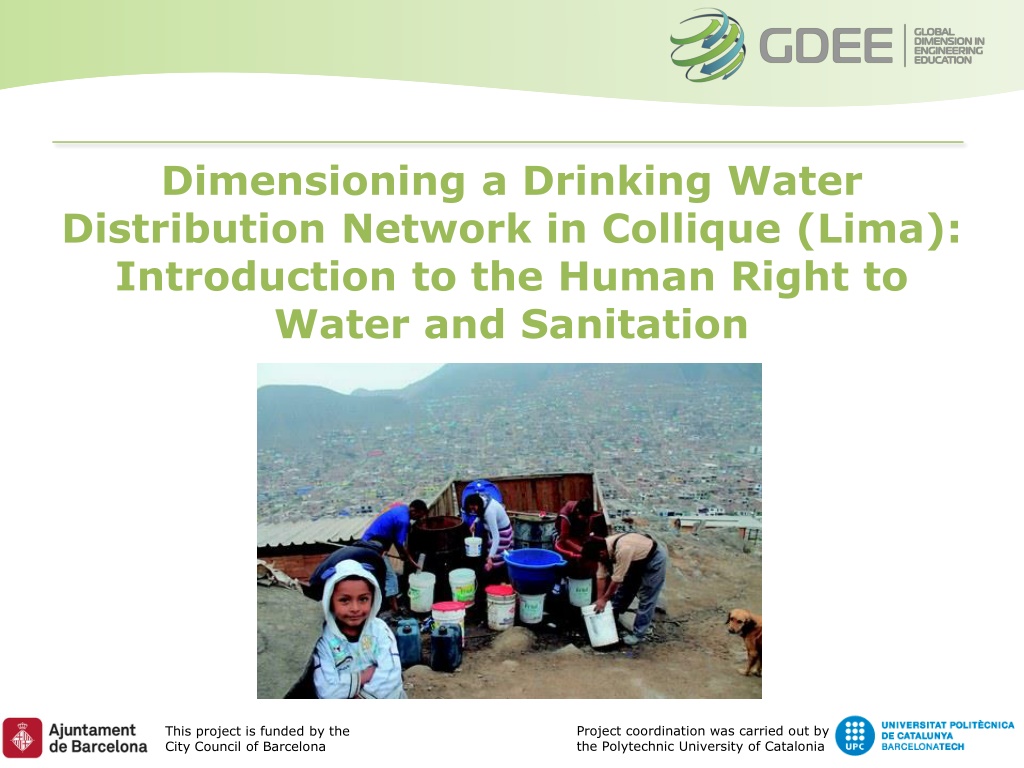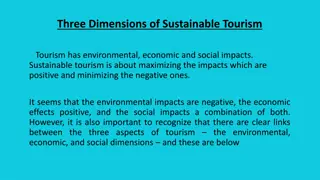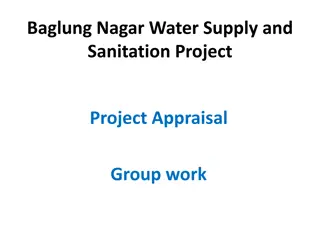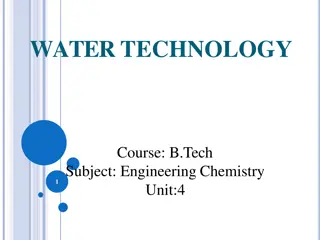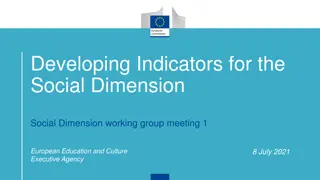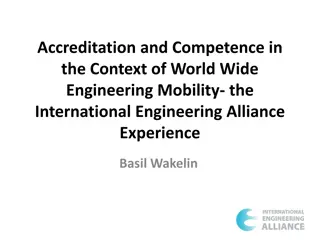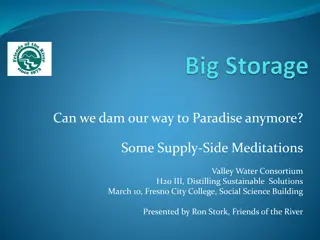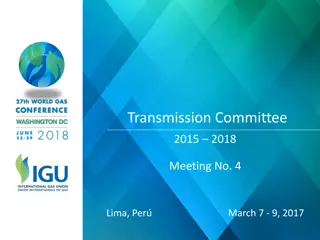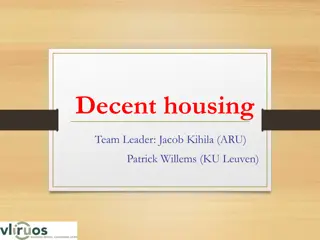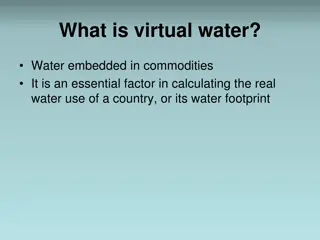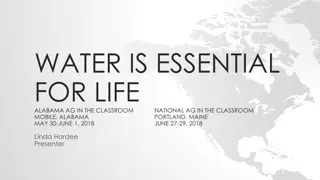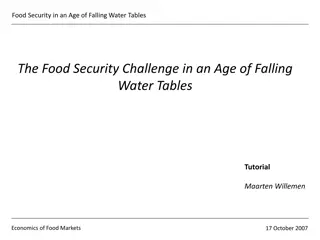Global Dimension in Engineering Education: Water Project in Collique, Lima
Introduction to the Human Right to Water and Sanitation project in Collique, Lima, led by the Polytechnic University of Catalonia and funded by the City Council of Barcelona. The project emphasizes the importance of water, sanitation, and hygiene in global development, highlighting the UN's recognition of water as a human right and the need for sustainable water management. Monitoring and evaluation efforts, such as the Joint Monitoring Programme, play a crucial role in ensuring universal access to safe water and sanitation.
Download Presentation

Please find below an Image/Link to download the presentation.
The content on the website is provided AS IS for your information and personal use only. It may not be sold, licensed, or shared on other websites without obtaining consent from the author. Download presentation by click this link. If you encounter any issues during the download, it is possible that the publisher has removed the file from their server.
E N D
Presentation Transcript
Global Dimension in Engineering Education Dimensioning a Drinking Water Distribution Network in Collique (Lima): Introduction to the Human Right to Water and Sanitation Project coordination was carried out by the Polytechnic University of Catalonia This project is funded by the City Council of Barcelona
Global Dimension in Engineering Education TABLE OF CONTENTS INTRODUCTION CONTEXT WATER, SANITATION AND HYGIENE GLOBAL CONTEXT HUMAN RIGHT TO WATER AND SANITATION (HRTWS) CASE STUDY: COLLIQUE (LIMA, PERU) WATER MANAGEMENT IN COLLIQUE COLLIQUE AND HRTWS CLASSACTIVITY HOMEWORK ACTIVITY 2
Global Dimension in Engineering Education INTRODUCTION 2010: the UN General Assembly and the UN Human Rights Council recognized water and sanitation as a Human Right (HR) 2015: the UN General Assembly adopted the 2030 Agenda for Sustainable Development Ensure availability and sustainable management of water and sanitation for all 3
Global Dimension in Engineering Education CONTEXT: WATER, SANITATION AND HYGIENE GLOBAL CONTEXT Access to water, sanitation, and hygiene (WaSH) is essential for human development and well-being (Carter et al., 1999; Cairncross & Valdmanis, 2006) Link with other development objectives, such as adequate nutrition, gender equality, education and poverty eradication (Joint Monitoring Programme, 2015) 4
Global Dimension in Engineering Education CONTEXT: WATER, SANITATION AND HYGIENE GLOBAL CONTEXT Monitoring and Evaluation: fundamental for decision-making Need of objective and reliable data on which to base planning, prioritization, and accountability mechanisms Leader Agency Joint Monitoring Programme Objective: Monitor national progress towards the universality of access to safe water and sanitation 5
Global Dimension in Engineering Education CONTEXT: WATER, SANITATION AND HYGIENE GLOBAL CONTEXT JMP : 3 "ladders" to monitor the specific targets 6.1 and 6.2 JMP (2015) WATER ladder 5,200 mill. pers. access to 844 mill. pers. lack of 263 mill. pers. access to 159 mill. pers. collect 6
Global Dimension in Engineering Education CONTEXT: HUMAN RIGHT TO WATER AND SANITATION (HRTWS) HRtWS: right of everyone to have access to a water (and sanitation) service that is sufficient, safe, accessible, culturally acceptable, and affordable for personal and domestic use, and that must be provided in a participatory manner that is responsible and non- discriminatory (Flores-Baquero, 2015) 5 dimensions of HRtWS (particularized for WATER) Availability: sufficient and continuous for personal and domestic uses Accessibility: physically accessible and safety for everyone Quality: it does not pose a threat to human health Affordability: available for use at a price that is affordable to all people Acceptability: acceptable color, odor and taste 7
Global Dimension in Engineering Education CONTEXT: HUMAN RIGHT TO WATER AND SANITATION (HRTWS) Millions of people face significant barriers to access due to where they live and who they are. Are they women? Do they belong to an ethnic minority? Are they poor? Do they live in a slum or in an impoverished rural area? Governments have an obligation to ensure access to water and sanitation for all members of the population (UN and WHO, 2012) Water and sanitation for vulnerable and marginalized groups is often a social exclusion issue, and not just a water issue (UN and WHO, 2012) Need to actively design water and sanitation policies that prioritize and address the needs of vulnerable and marginalized groups 8
Global Dimension in Engineering Education CONTEXT: CASE STUDY: COLLIQUE (LIMA, PERU) Lima: second largest city in the world (after Cairo) that is located on top of a desert Lima Metropolitan: 30% of country s population with 9,904,000 inhabitants (INEI, 2015) HOUSEHOLD PERCENTAGE WITH WATER SERVICE NUMBER OF HOUSEHOLDS ECONOMIC CONDITION High-income municipalities 92,276 99.8 Medium-income municipalities 184,187 77.9 Low-income municipalities 712,878 68.1 9
Global Dimension in Engineering Education CONTEXT: CASE STUDY: COLLIQUE (LIMA, PERU) Collique: Peri-urban area (Comas district). Informal settlements in the cerros POPULATION DENSITY (inhab/km2) INHABITANTS AREA (km2) Lima 7,605,742 2,670 2,854 Comas 525,000 48,72 11,000 Collique 116,000 5 23,200 10
Global Dimension in Engineering Education CONTEXT: WATER MANAGEMENT IN COLLIQUE Drinking water distribution networks, as well as their management, are fundamental for guaranteeing a correct level of service to the population Lima: mainly the responsibility of the public company SEDAPAL (Servicio de Agua Potable y Alcantarillado de Lima; Lima Potable Water and Sewage Service ) 4 different forms of water supply SEDAPAL Community Pil n Tanker truck Community members 11
Global Dimension in Engineering Education CONTEXT: COLLIQUE AND HRTWS Research work Participatory workshops with children, youth, and women Generate a proposal of indicators that measure water service levels HRtW prioritization 1 Quality 2 Accessibility 3 Availability 4 Acceptability 5 Affordability 12
Global Dimension in Engineering Education CONTEXT: COLLIQUE AND HRTWS HRtW conceptual framework proposal: water service level Availability (AVA) Accessibility (ACC) Quality (QUA) Affordability (AFF) Acceptability (ACP) Level Service on-premise or by pil n (supplied by SEDAPAL), apt for human consumption; storage recipients cleaned appropriately and frequently Service Provision Utility (SPU) tariff, fixed or by consumption (without meter), which is fair and affordable according to purchasing power (G) Water with mountain spring appearance, transparent, without a bad smell or chlorine taste Service on-premise with intra-household facilities in use (B) 1 24-hour on-premise service Service on-premise or by pil n (supplied by SEDAPAL); water is boiled before consumption (D) SPU tariff, fixed or by consumption (without meter), which represents an important part of the expenses for basic services Service on-premise, continuity of 7 to 24 hours, with sufficient storage capacity (A) Service on-premise without intra-household facilities (C) Transparent water but with a slight chlorine taste 0.75 Service on-premises, from 2 to 7 hours, supplied by pil n , tanker truck, or other means; sufficient storage capacity Service through pil n (supplied by tanker truck) or SEDAPAL tanker truck (E) Service through pil n or tanker truck, with storage tanks on the roof and intra- household facilities Payment by cylinder from the pil n (10 to 15 times higher than the SPU price) Whitish water with a strong chlorine taste 0.50 Service through pil n (supplied by tanker truck) or clandestine tanker truck; water presents turbidity or strange elements (F) Service on-premise, from 2 to 7 hours, supplied by pil n , tanker truck, or other means; insufficient storage capacity Payment by cylinder from the tanker truck or other (40 times higher than the SPU price) Service through pil n , tanker truck, or other means, without intra- household facilities Water turbid or with strange elements 0.25 13 0 Supply from surface water (e.g., rivers, ditches, etc.)
Global Dimension in Engineering Education CONTEXT: COLLIQUE AND HRTWS Human Rights principles point out the importance of evaluating all dimensions equally Collique: different weights according to population prioritization Centroid method (Shepetukha & Olson, 2001) 14
Global Dimension in Engineering Education ACTIVITIES CLASSACTIVITY Block I (3-4 students): Reflection and final sharing Block II (individual): Guided workshop Small water supply network dimensioning HOMEWORK ACTIVITY Groups of 3-4 students Larger water supply network dimensioning Reflect on the water service management 15
Global Dimension in Engineering Education CLASS ACTIVITY BLOCK I 1. Indicate direct and indirect impacts associated with the deprivation of HRtW dimensions 2. Order the dimensions according to their importance 3. Re-calculate the proposed IndexHRtW 16
Global Dimension in Engineering Education CLASS ACTIVITY BLOCK II Calculate: Internal flow of the network Pressure in each hydrant Take into account pressure losses of pipe sections Pipelines of = 90 mm. 17
Global Dimension in Engineering Education HOMEWORK ACTIVITY 1. Water supply network dimensioning Specific starting data Working tool Other software EPANET WaterGEMS 18
Global Dimension in Engineering Education HOMEWORK ACTIVITY 2. Analyze and discuss the obtained technical results 3. Propose a management scheme related to the water distribution network (max. 2 pages) 4. been carried out Detail the possible reasons why a project to bring water into household premises has not 5. Compare the main similarities and differences with those codes provided (if applicable) 6. perspective and methodology of the multidimensional index proposed (IndexHRtW) Compare the result of building public water sources and household connections from the 7. of water service Reflect on the suitability of using the proposed multidimensional index to assess the level 19
Global Dimension in Engineering Education EVALUATION CLASSACTIVITY Block I:Awritten report will be submitted, answering the questions raised Block II: It is not evaluated (objective: provide the necessary knowledge to develop the homework activity) HOMEWORK ACTIVITY A written report will be submitted (including the annex with the relevant calculations), solving all questions formulated in the activity Both deliveries will be evaluated based on the proposed rubric 20
Global Dimension in Engineering Education EVALUATION: RUBRIC 21
Global Dimension in Engineering Education Project: Integrate and Promote Global Issues in Scientific-Technical Education
